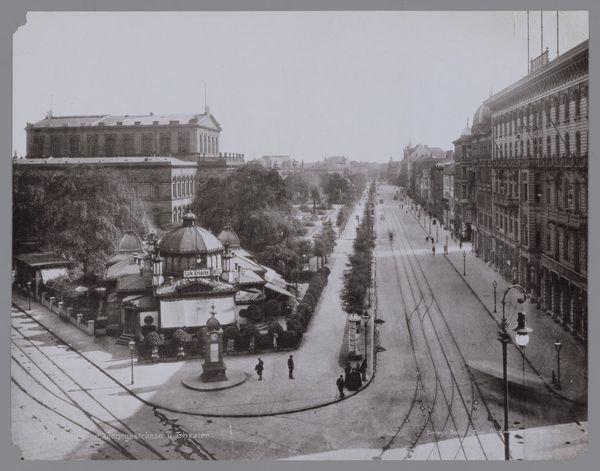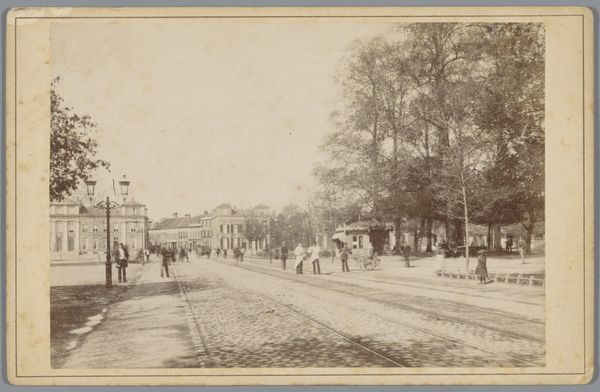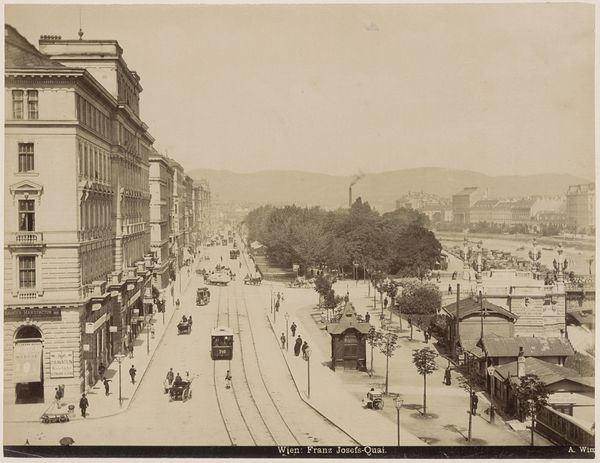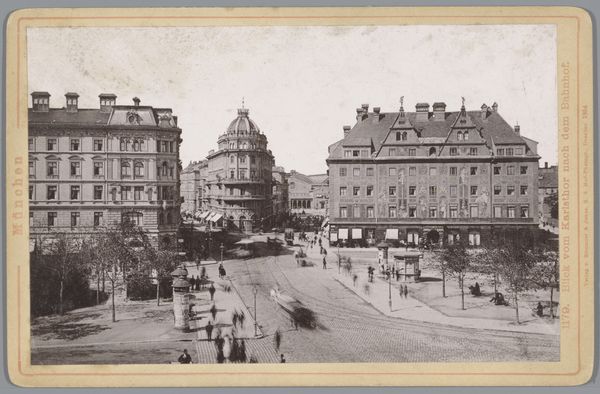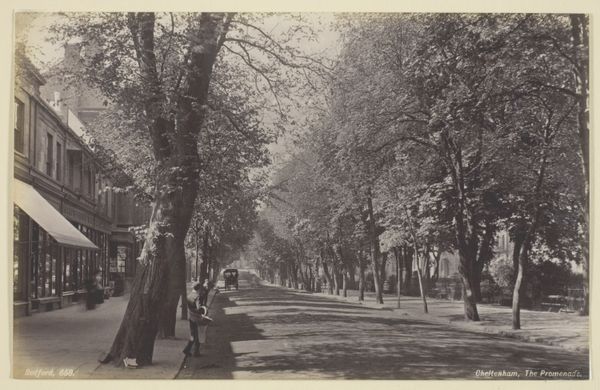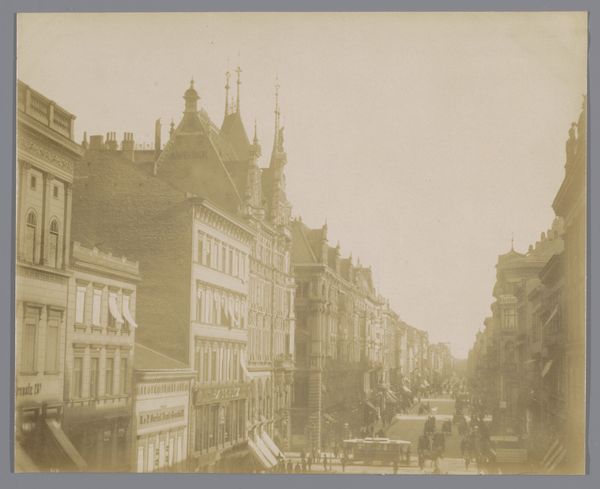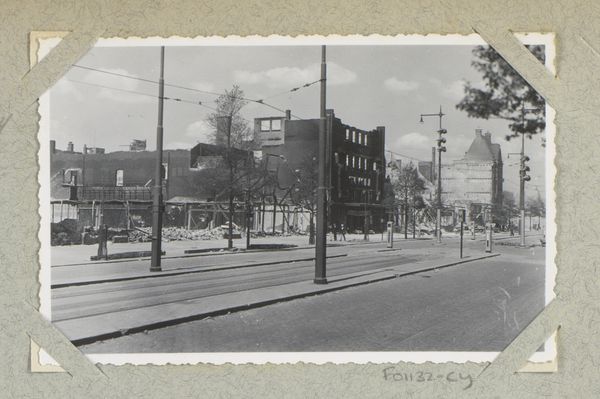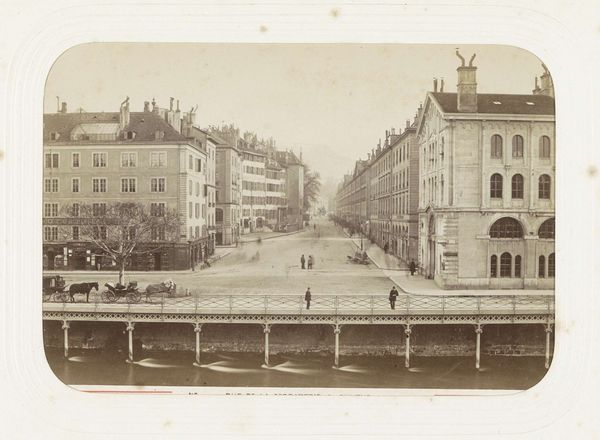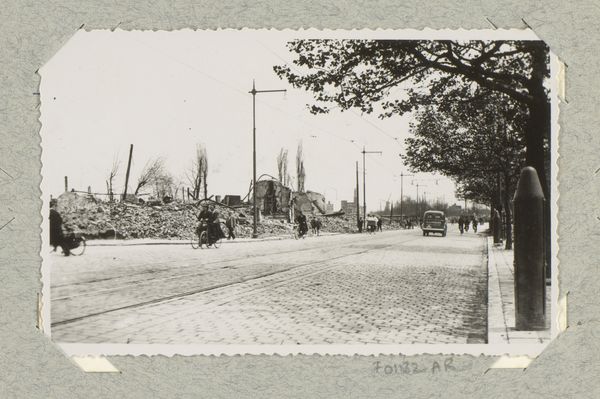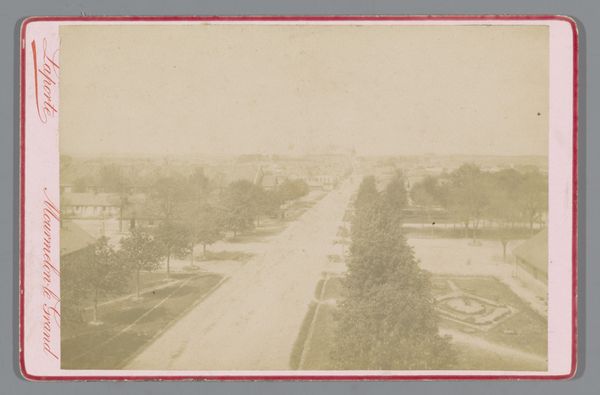
photography, gelatin-silver-print
#
pictorialism
#
photography
#
gelatin-silver-print
#
cityscape
#
street
#
realism
Dimensions: height 151 mm, width 212 mm
Copyright: Rijks Museum: Open Domain
Editor: Here we have a gelatin-silver print from 1891, “Gezicht op de Karl Johans gate in Oslo," or "View of Karl Johans Street in Oslo." I am really drawn to how the blur of the figures creates the feeling of bustling urban life. What can you tell us about this photograph? Curator: This photograph offers a compelling snapshot of urban development and societal shifts occurring in Oslo, or Christiania as it was then known, during the late 19th century. Consider the vantage point: elevated, seemingly detached from the street-level activity. This speaks to a growing middle class, perhaps, who could afford to literally look down on the bustling masses. Editor: That’s an interesting perspective. The elevated view makes it feel somewhat removed, observing rather than participating. Curator: Exactly. And that perspective is itself a product of specific social and technological forces. Photography was becoming more accessible, allowing for the democratization of image-making. But who had the time and resources to experiment with artistic photography? These "cityscapes," as they're often termed, were powerful tools. Editor: Powerful how? Curator: They projected an image of modernity, of progress, but they could also sanitize the view. Do we see poverty here? Unrest? No. The focus is on order and commerce, suggesting a controlled narrative of urban life, shaped and presented to a specific audience. The Grand Hotel on the right signifies an burgeoning tourism industry that catered to the wealthy and served the cultural elite. Editor: I hadn't considered how the absence of certain things could be so telling. This gives me a lot to think about, not just about this image but how photos reflect a specific social and cultural context. Curator: Precisely. It shows how crucial it is to critically examine any artistic expression by looking at what it signifies, not just as a static image but as an active voice in historical dialogues.
Comments
No comments
Be the first to comment and join the conversation on the ultimate creative platform.

